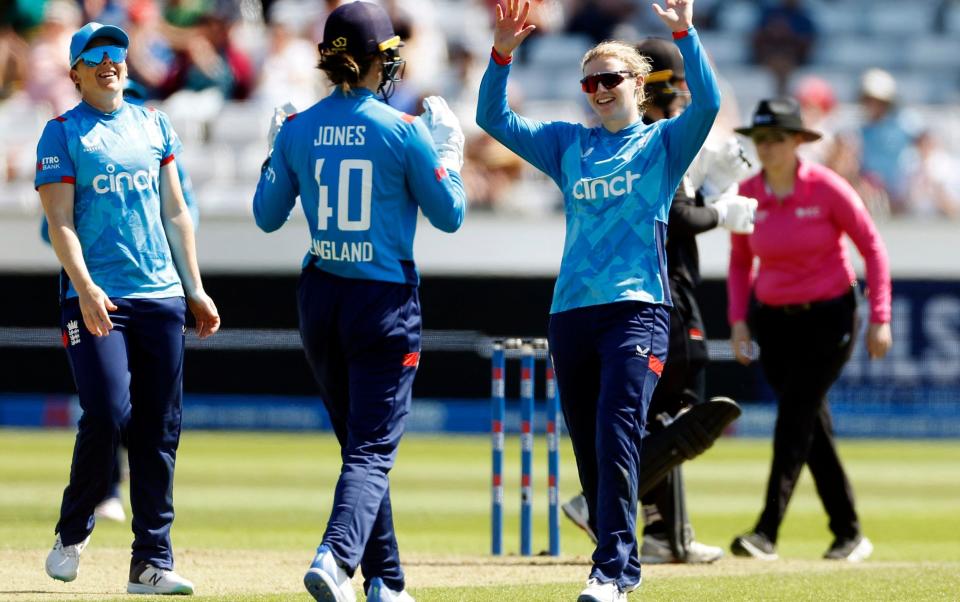
Charlie Dean added to her growing standing by bowling England to a crushing nine-wicket victory over New Zealand in the first one-day international in Durham.
Any spinner playing alongside Sophie Ecclestone is consigned to being the side’s second leading spinner. And yet Dean, whose off-spin is the perfect complement to Ecclestone’s left-arm spin, is increasingly losing little in comparison to the world’s No 1 bowler. With four for 38 from nine overs, Dean consigned New Zealand to a meagre 156 all out at Chester-le-Street. It seemed at least 100 runs below par. As Tammy Beaumont and Maia Bouchier added 137 in just 17.2 overs, before Bouchier fell for 67, New Zealand’s innings was made to seem even more inadequate.
Dean would have been particularly pleased to snare four right-handers, the type of batter that off-spinners tend to fare worse against. Her first wicket, that of Isabella Gaze, was a consummate off-spinner’s dismissal: sharply-flighted with a healthy dollop of bounce, and then turning past the bat to crash into the front pad. Gaze’s review of the decision was perfunctory, more driven by a recognition of New Zealand’s desperate plight than a belief that she had suffered from umpiring injustice.
By dismissing three members of the tail, Dean earned herself the player-of-the-match award. Her performance extended her remarkable ODI record: Dean’s 59 wickets have now come at 19.2 apiece, taking a wicket every 25 balls. While Ecclestone’s economy rate is almost a run an over less – and she was typically frugal in taking two for 28 from seven overs in Durham – Dean actually averages one run per wicket less. If no one would make the claim that Dean is Ecclestone’s superior, England do not need to choose. How lucky Heather Knight is to be able to call upon both.
“I’m just working on being more and more consistent,” Dean said. “I know that my best ball is pretty good so just trying to do that as much as possible.”

Taking seven wickets with spin at the normally seam-friendly Chester-le-Street was a testament to the qualities of England’s slow bowlers; leg-spinner Sarah Glenn, a third type of spinner, wrapped up the innings. “We’re lucky enough that we’ve got three really good spinners,” Dean said. “It just pushed everyone to get better.”
Yet England’s most important wicket was taken neither by seam nor spin. At 56 for one after 10 overs, New Zealand were on course to vindicate their decision to bat first in benign batting conditions. To the first ball after the Powerplay, Amelia Kerr pushed a ball to mid-on. It hit non-striker Georgia Plimmer, but Kerr had already decided to run. While she hared to the bowler’s end, the ball ricocheted to Bouchier, whose sharp throw was taken by Amy Jones with Plimmer still way short of her ground. It was the prelude to a collapse of four for 19 in 27 balls; New Zealand never threatened to recover.
The run-out encapsulated a performance that was well short of New Zealand’s usual standards. Their bowling display was marked by a palpable rust, which Beaumont exploited as she attempts to use the ODI side as a route back into England’s T20 team. Unless they are much better in Worcester on Sunday, England will expect to seal the series.
Article courtesy of
Source link